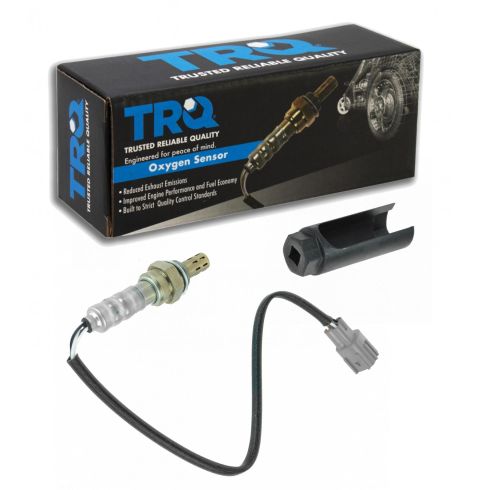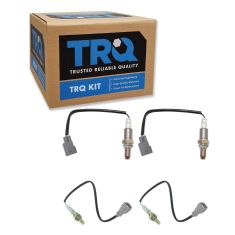1AEEK00510-Toyota Lexus Pontiac Scion O2 Oxygen Sensor TRQ OSA61644

Replaces
2008 Toyota FJ Cruiser V6 4.0L Downstream Right O2 Oxygen Sensor TRQ OSA61644

Product Reviews
Loading reviews
5.00/ 5.0
10
10 reviews
Oxygen sensor
November 8, 2017
Good value worked and fit fine. The tool made it easy
Satisfied with my purchase
November 30, 2017
The product shipped on time and came as advertised. Although it was pain to remove the old one and install the new one but that is because of the location on my Toyota Avalon. Installation was a breeze when I somehow managed to thread it in. The install tool was a life saver though and I would highly recommend to all to get it along with the sensor since it helped me out a ton.
Return policy
April 23, 2018
I ordered the wrong part because I wasn't sure of the fit, but A1 allowed me to return the part for a full refund and sent me the correct one.. The correct part was an exact fit and I have had no problems with it. I would recommend A1 to anyone including family and friends.
Exact fit on sensor, easy to use tool
November 19, 2018
The new oxygen sensor was easy to install and an exact fit for my vehicle. The tool provided in this kit was ideal because I had the option of using a 3/8 ratchet or a wrench on this socket to remove the old sensor.
Oxygen sensors for MR2
December 3, 2019
The service, quality of the product and the prompt delivery are great. Would recommend to others.
fantastic DIY support
December 17, 2019
My mechanic is GREAT--but it seems every time I pull into his garage, I'm out $500. Typical of modern technology, there are some things that seem like they should be difficult and expensive, but in reality are quite simple and relatively cheap to repair/replace. Air filters, Oxygen sensors, and fuses are prety good examples.
1A Auto's DIY videos made it pain-free to replace the oxygen sensor on my "old-reliable" 4 Runner. The kit even came with the special installation tool which I bet my mechanic doesn't even have.
1A Auto's great cross-referencing database, easy order and ship system, and online Videos gave me the confidence to take care of the job myself! I'm not super hands-on, but by just following the directions 1A provided in the video, I was able to get the job done!
Thank you 1A Auto!
Exact replacement for 1999 Toyota Sienna.
May 14, 2021
Easy to replace and computer reads this sensor. Good quality for the price. I have 3,000 miles so far and still works.
J W
December 5, 2023
O2 sensor for my 2005 Camry. Parts came in on time. Price was great with free shipping and also included specialty socket in that price range. Anti siege already applied to threads. So far works great. We will see how long it lasts.
April 24, 2024
Arrived on time and as described. Well packaged and no install problems. Would recommend.
Great replacement for the 02 sensor!
April 29, 2024
02 sensor looked just like the oem one. Perfect fit, plug and play.
Customer Q&A
Is it the bank 1 sensor 1 99 Camry v6?
August 28, 2017
10
I don't remember if it is bank 1 sensor 1, but it is the one on the back of the engine near the firewall. ( I used on 98 Avalon 3.0 V6)
August 28, 2017
Branislav B
10
Yes, this is the upstream (sensor 1) sensor for a 1999 Toyota Camry, but will not be correct if your vehicle is equipped with California emissions.
September 3, 2017
Tim K
can this sensor fit a 4 cylinder 2011 rav4 ?
March 22, 2018
does it come with a gasket & plate?
June 9, 2023
10
New hardware is not included with this item. You may be able to reuse your original hardware if it is in good condition.
June 10, 2023
Jean O
Is that bank 1 sensor 2 for Camry 2005 le?
October 21, 2023
10
This is the front downstream sensor for the 2005 Camry.
October 23, 2023
Kemal S
Toyota is a registered trademark of Toyota Motor Corporation. 1A Auto is not affiliated with or sponsored by Toyota or Toyota Motor Corporation.
See all trademarks.
















